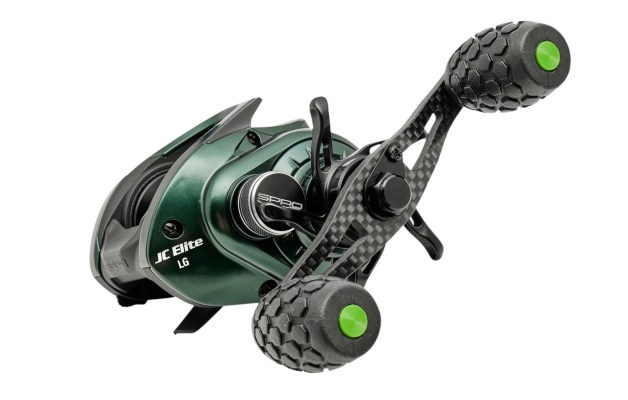
Tommy Biffle: Wheeler Lake
Ask some anglers what they used to catch a heavy stringer at this or that tournament, and you'll get a different answer every time.
Ask Tommy Biffle, and the only variance to his answer is likely to involve whether the Gene Larew soft-plastic he was using was dark or light in color. The Wagoner, Okla., pro makes no apologies for his simplistic approach to fishing: if there's flooded cover, he's going to flip it and pitch it with soft-plastics.
It's hard to argue with success, which is what Biffle got a $100,000 taste of last week in the Evan Williams Bourbon Dixie Duel at Alabama's Lake Wheeler. Biffle's winning stringer of 50 pounds, 13 ounces earned him the fourth major championship of his career.
Come what may, Biffle will get his bass. He might not win every tournament, depending on what the other guys have going for them, but you've got to take a tournament away from him; he's not going to hand it to you.
Hindsight being 20-20, Biffle's victory in the Elite Series event was almost predictable, given that he located a good concentration of bass in a backwater slough during practice, and given that the 2 inches of rain that fell on the evening of the first round were likely to send shallow bass eager to spawn into flooded shoreline cover. It was a perfect storm for Biffle, in more ways than one.
He fished a slough connected to a larger backwater cove. In practice, Biffle caught enough bass around logs and laydowns to convince him that he needed to return during the competition. On Day One, Biffle went back to the slough and used a Texas-rigged Sweet Beaver (black neon), a half-ounce Rattleback jig (black and blue with a black-neon Biffle Craw by Gene Larew) and a Gene Larew 8-inch Biffle-O Lizard (black neon). Biffle chose dark colors because the water was dingy where he was fishing and he needed lures that stood out boldly rather than blended in subtly.
The 4 ½-inch Sweet Beaver by Reaction Innovations and the Biffle-O were rigged with a 5/16-ounce Tru Tungsten weight and tied to a 4/0 VMS wide-gap hook. Biffle fished the baits with a 7 ½-foot Quantum Signature Series Rod of his design, matched with a Quantum Tour Edition bait-caster (7:1 gear ratio). Biffle's line was 25-pound-test Sunline Shooter fluorocarbon.
"The flipping rod I designed for Quantum is very heavy. And I really dogged down the drag on the reel," noted Biffle. "You can't give a big bass its head in heavy cover; the longer it stays in there, the more likely something bad is going to happen. Twenty-five-pound-test is about right for this kind of fishing, and I don't break off any fish with the Sunline Shooter."
When Biffle returned to the opening-round weigh-in with 16 pounds, 2 ounces, and told reporters that he had caught about 30 keeper bass, veteran observers at the event began to suspect that the 23-year veteran was poised to make a move. The weather delay Friday postponed the inevitable. Though Biffle was chomping at the bit to get back to his spot, he had to wait until Saturday. The fish were still there, though not as aggressive.
"On the first day, bass were hitting the bait on the fall or while it was moving along at a pretty good clip, but I had to work the baits a whole lot slower after that," Biffle recalled. "Slowing down was the key to everything. The bait had to be barely moving or the fish just wouldn't take it. Sometimes they just picked it up and I barely felt movement on the line. And most of the bass were barely taking hold of the bait. I dropped off a 5-pounder on the second day and lost a few more smaller fish along the way because they weren't hooked good."
The biggest difference between the first and second rounds was the cover available to Biffle. When the water went up, it flooded the buck brush and gave Biffle more fish-rich targets in water from 6 or 8 inches deep to about a foot deep. The availability of more targets, and the challenge posed by less aggressive fish, prompted Biffle to slow down his presentation as well as his boat.
"My observer on the last day timed me and said that I covered 60 yards of bank in an hour and twenty minutes," said Biffle. "Of course, I would stop every once in a while and fish every bush around me before moving on a little father."
In this approach, Biffle's best tool was the Power-Pole shallow-water anchoring device on the stern of his Ranger. Rather than having to use his trolling motor constantly in the shallow water, Biffle could lower the Power-Pole and stay put.
"The Power-Pole really came in handy when the wind got up in the afternoons of the tournament," said Biffle. "I'm sold on it for fishing heavy cover in shallow water on a windy day."
Which, in Biffle's case, means just about any time he's fishing.




